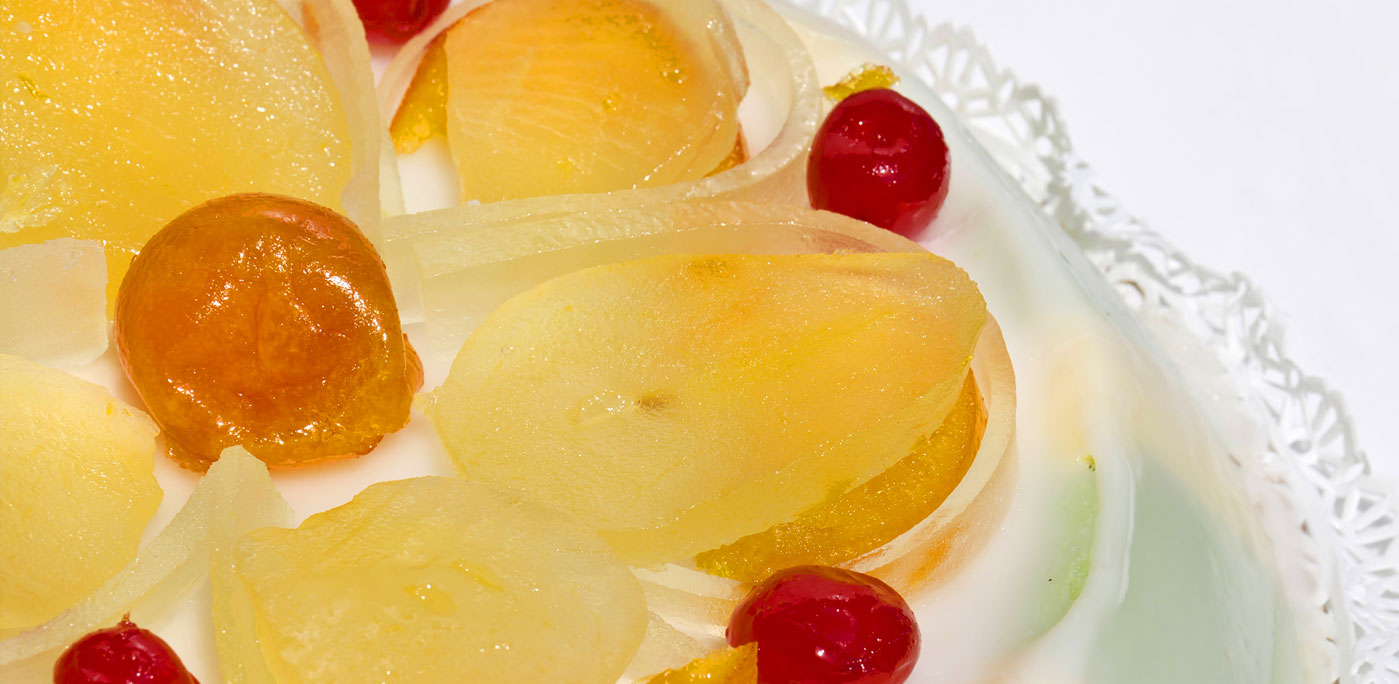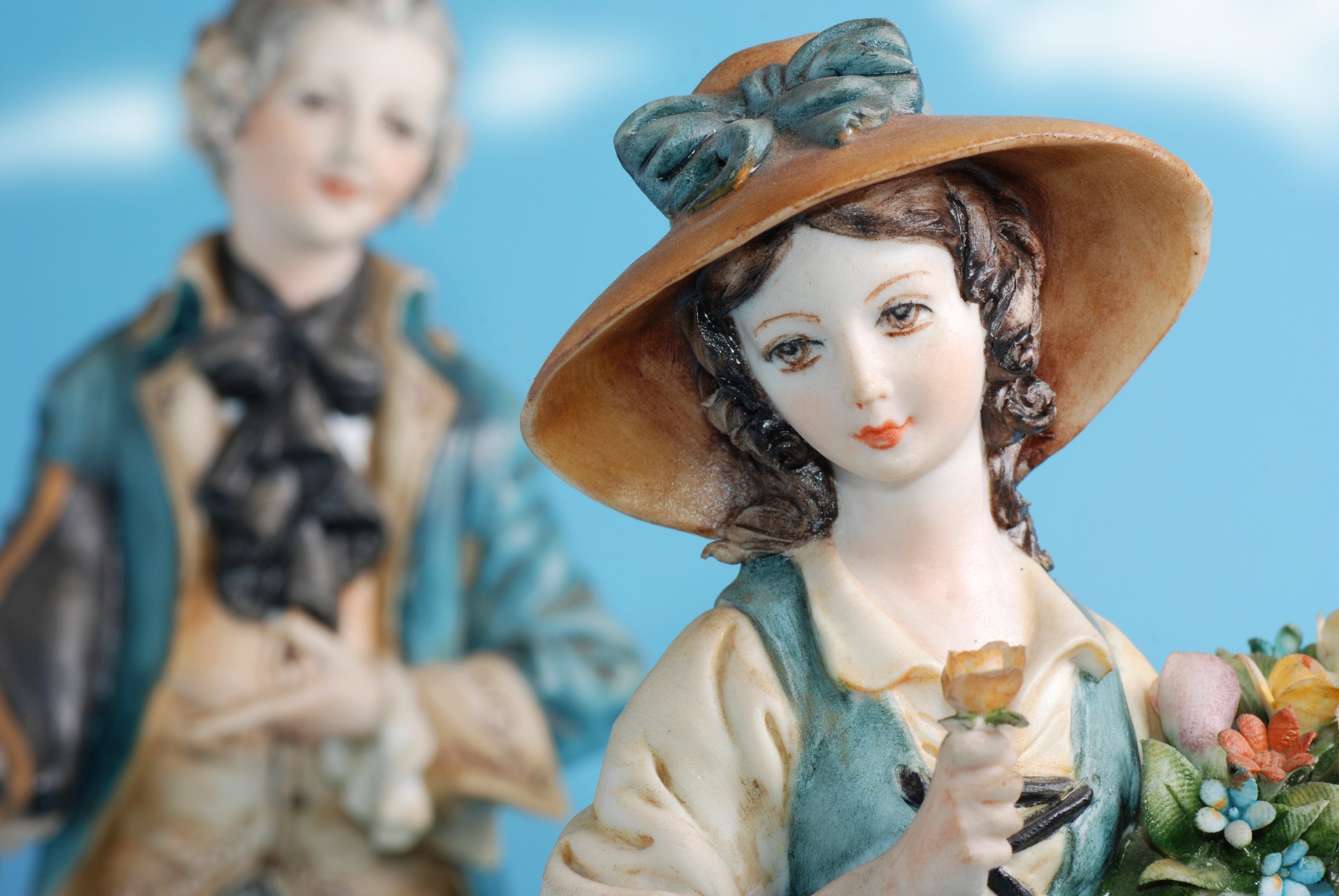A vigorous thrust with a fork resolutely imposes on the icing to reach the body of soft ricotta cream in perfect symbiosis with the sponge cake. The bitter chocolate morsels explode in your mouth in contrast with the sweetness of candied fruits.
We are not talking of any dish of Italian cuisine, but of the sweetest of sweet desserts, Her Majesty the Cassata, standard bearer and history book not to be read but to be tasted to learn the ancient taste of Sicily, the largest Italian island, crossroad of past peoples and Mediterranean harbor. From Phoenicians to Greeks, from Romans to Arabs and Normans, passing through thousands of other peoples, all have been capable to add something to the gastronomy as well as to the architecture of Sicily.
The cassata name itself brings us back in time. According to some the name, and thus its creation, derives from the Latin “caseus”, cheese, according to others from the Arabic “qas’at”, bowl. It is thought that Greeks had developed a version of the cassata comparable to modern cheesecake and that this was later enriched by Arabs who, between the 9th and the 11th century, had introduced new flavors in Sicily through the sugar cane, almonds, citrus fruits, which became the island’s bastion and symbol in public imagination. The whirlwind of flavors that such a melting pot can create immediately comes to surface.

Cassata, originally connected to Easter, is now had during the entire year and it is spreading all over the world. Photo by jacklondon
Past the first layer of thick and soft icing, we discover how other peoples have contributed to make this dessert an example of pure perfection. The sponge cake – created around the 18th century to honour the Spanish court, hence the Italian name Bread of Spain, by a cook from Genoa, who was in that country with the Italian ambassador Domenico Pallavicino – envelops and supports the ricotta cream. The sheep milk ricotta, known also by Greeks and produced on the island since ancient times, makes us think of a milk enabling very different flavours than those of common cow milk which we have grown accustomed to. The ricotta generated by this unique type of milk is mixed with sugar to give life to a sweet and unique cream made precious by chocolate drops.
If by now we understand the main structure of this delicacy, we cannot not complete the taste framework by adding two details. The first is the paste, produced for the first time at the Martorana convent in Palermo, hence the name pasta Martorana. It is a hard paste, composed of sugar and almond flour, which, substituting a baking-demanding shortcut pastry, transformed cassata in the cold-prepared dessert that we know today.
Candied fruits are the worthy decoration of this luminous and purely white icing disc that characterizes the cassata. The fruit, dehydrated and immersed in as sugar syrup, becomes an element of bright colour adorning like precious stones the dessert surface, putting on a show of gastronomic architecture similar to the baroque architecture of the island. Although the candying process highly diminishes the fruit nutritional value, it exalts its colours which become unique especially in contrast with the white surface on which they are laid.
This authentic work of art, originally connected to Easter, is now had during the entire year and it is spreading all over the world thanks to an ever more asserting quality of Made in Italy products and to internet which allows an international marketing.
Talking about cassata one must also talk of Catania Saint Agatha’s cassatella, also known as Saint Agatha’s breasts because of their semi-spherical shape with a cherry on top and which is a miniature version of cassata. Connected to religion and to the ancient cults of Isis and Demeter, both documented in Catania, cassatella was created in celebration of Saint Agatha’s martyrdom and the tearing away of her breasts.
Having spoken of the throne of sweetness of this ancient queen of Sicilian pastries, we cannot leave behind her scepter, the Cannolo. Here a hard pastry is fried by immersion, preferably in the extra virgin olive oil, cornerstone of Sicilian quality products, which type of frying makes it crunchy and fragrant. After it has cooled, it is filled with a ricotta cream and decorated with candied cherry or Bronte pistachio nuts depending on whether one is in the Eastern or Western side of Sicily.
This authentic “walking” dessert must be savored possibly walking along the streets of the island, possibly looking on one side at Mount Etna, the highest active volcano in Europe, and on the other side at the unique and infinite sea, characterized on the Eastern coast by lava rocks whose black colour stands out against the blue of the sea and the sky. This dessert thus represents the embrace of two elements, the crunchy pastry and the ricotta cream, which balance and exalt one another like the embrace of two lovers or of the earth and the sea. May it be a crunchy sweet or a soft sphere overflowing with sweet cream, may it be precious of infinite details or simple and homey, these sweets are a must to be tried at least once in a lifetime to feel the warmth and sweetness of a land unique in the world.
Una vigorosa forchettata si impone decisa sulla glassa per arrivare al corpo di morbida crema di ricotta in perfetta simbiosi con il Pan di Spagna. I pezzetti di cioccolata amara esplodono in bocca in contrasto con la dolcezza della frutta candita.
Non parliamo di un piatto qualsiasi della cucina italiana, ma del dolce che più dolce non si può, Sua Maestà la Cassata, portabandiera e libro di storia non da leggere ma da gustare per apprendere il gusto antico della Sicilia, la più grande isola italiana, crocevia di popoli passati e porto del mediterraneo. Dai fenici ai greci, dai romani agli arabi e ai normanni, passando ancora per mille altri popoli, tutti hanno saputo aggiungere qualcosa nella gastronomia come nell’architettura.
Il nome stesso della cassata ci riporta indietro nel tempo . Secondo alcuni il nome, e quindi la sua creazione, deriva dal latino “caseus”, formaggio, secondo altri dall’arabo “qas’at”, scodella. Si pensa che i greci avessero sviluppato una versione della cassata paragonabile all’odierno cheesecake poi arricchita dagli arabi che, nei secoli tra il IX e l’XI , avevano introdotto in Sicilia nuovi sapori attraverso la canna da zucchero, le mandorle e gli agrumi, divenuti baluardo e simbolo dell’isola nell’immaginario. Emerge subito il turbinio di sapori che un simile calderone di prodotti può generare.

La Cassata, originariamente legata alla festività di Pasqua, viene ora assaporata durante tutto l’anno e sempre più si sta diffondendo nel mondo. Photo by jacklondon
Superato il primo strato di quella densa e morbida glassa, scopriamo come altri popoli hanno contribuito a rendere questo dolce un vero esempio di perfezione. Il Pan di Spagna, creato intorno al XVIII secolo per onorare la corte spagnola ad opera di un cuoco genovese che si trovava in quel Paese presso l’ambasciatore italiano Domenico Pallavicino, avvolge e sostiene la crema di ricotta. La ricotta di latte di pecora, già prodotta anticamente sull’isola e conosciuta anche dai greci, ci fa pensare a un latte capace di dare sapori molto diversi al comune latte di vacca a cui siamo abituati. La ricotta generata da questo unico tipo di latte, viene miscelata allo zucchero, per dare vita a una crema dolce e unica, impreziosita poi da gocce di cioccolato.
Ma se adesso conosciamo la struttura principale di questa prelibatezza, non possiamo non completarne il quadro gustativo aggiungendo due dettagli. Primo di essi è la pasta, prodotta per la prima volta nel convento della Martorana a Palermo. Una pasta dura composta da zucchero e farina di mandorla che, sostituendo la pasta frolla che imponeva una preparazione a caldo, trasformava la cassata nel dolce dalla preparazione a freddo che conosciamo adesso.
I canditi poi sono la degna decorazione di quel luminoso e candidamente bianco disco di glassa che caratterizza la cassata. La frutta, disidratata e immersa in uno sciroppo di zucchero, diventa elemento di luminoso colore che impreziosisce come pietre preziose la superficie del dolce, dando spettacolo di un’architettura gastronomica simile a quella barocca dell’isola. Se la frutta nel processo di canditura perde molte delle sue qualità nutritive, esalta i suoi colori che diventano unici, in particolare ponendosi in forte contrasto con il bianco della superficie.
Questa autentica opera d’arte, originariamente legata alla festività di Pasqua, viene ora assaporata durante tutto l’anno e sempre più si sta diffondendo nel mondo, grazie alla sempre più attestata qualità del made in Italy e a internet che ne permette la commercializzazione in tutti i continenti. Parlando della cassata non si può non accennare alla cassatella di Sant’Agata, chiamata anche “minna di Virgini”, seno della Vergine, per la sua forma a mezza sfera decorata con una ciliegina sulla sommità, che si presenta come una versione in miniatura della cassata. Legata alla religiosità e agli antichi culti di Iside e Demetra, entrambi documentati a Catania, secondo alcuni fu creata per celebrare il martirio della patrona di Catania, Sant’Agata, a cui venne strappato il seno.
Se abbiamo parlato del trono di dolcezza di questa antica regina della pasticceria siciliana, non possiamo tralasciare il suo scettro, il Cannolo.
Qui una pasta dura viene fritta per immersione, preferibilmente in quell’olio di oliva caposaldo della produzione di qualità dell’isola, diventando croccante e profumato. Solo dopo essersi raffreddato viene farcito, preferibilmente appena prima di essere consumato, con la crema di ricotta e decorato da ciliegie candite o da pistacchio di Bronte tritato a seconda che ci si trovi più vicini alla costa occidentale che a quella orientale dell’isola. Questo autentico dolce “da passeggio” , va assaporato passeggiando per le strade dell’isola, magari con uno sguardo verso l’Etna, il vulcano attivo più alto d’Europa, e uno al mare unico e sconfinato, caratterizzato sulla costa orientale dalla pietra lavica il cui nero profondo si staglia contro l’azzurro del cielo e del mare.
Questo dolce rappresenta quindi l’abbraccio di due elementi, la scorza e la crema di ricotta, che si compensano ed esaltano vicendevolmente come l’abbraccio di due amanti e come quello della terra e il mare. Che sia un dolce croccante, o che sia una morbida sfera traboccante di dolce crema, che sia impreziosita da mille particolari o che sia semplice e casalingo, questi dolci sono un must da provare almeno una volta nella vita per sentire il calore e la dolcezza di una terra unica al mondo.
































